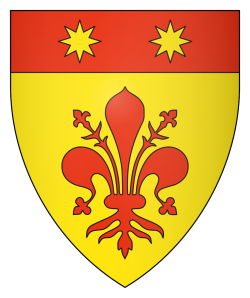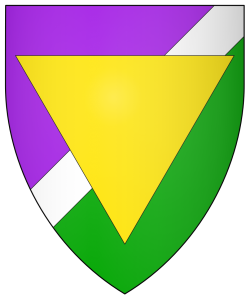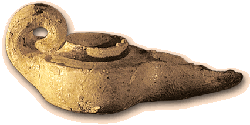Alax is is my son, and wanted a name that reflected his mother’s Scottish ancestry, and a device suggestive of his primary interest in the society: youth combat.
Sable, an escutcheon within an orle Or.
Black and yellow are the colors of the martial offices, and after trying dozens of different designs he settled on these nested shield shapes.
Alaxandair is a Gaelic form of Alexander, first recorded as the name of a Scottish king born at the end of the 11th century (Alaxandair mac Mael Choluim), as well as two 13th century successors (Alaxandair mac Uilliam and Alaxandair mac Alaxandair), and then appearing more widely in records in the 13th and 14th centuries.
Continue reading “Name and Device for Alaxandair Mórda mac Matha”



 Per bend sinister purpure and vert, a bend sinister argent, overall an inverted triangle Or.
Per bend sinister purpure and vert, a bend sinister argent, overall an inverted triangle Or.


